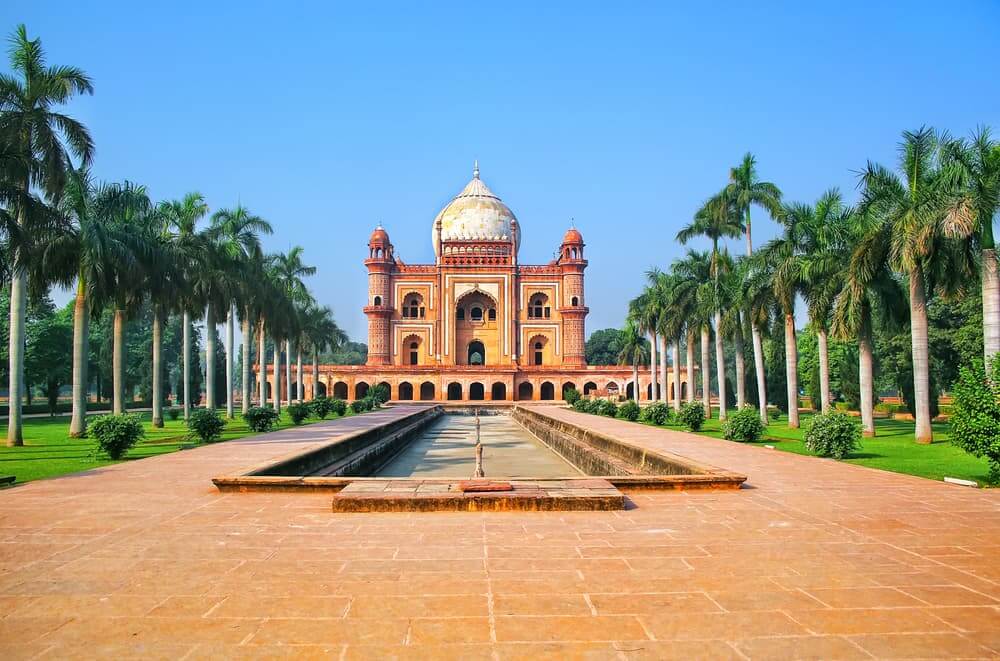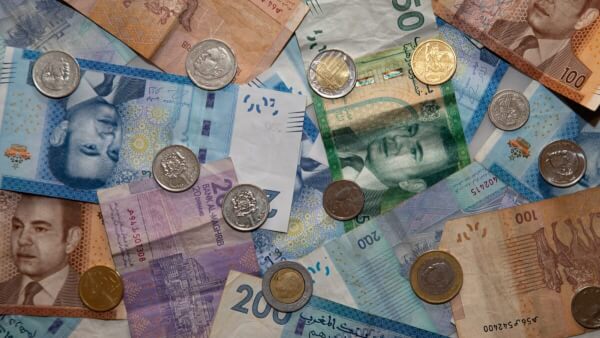Best expat bank accounts in the UK
Discover the best expat bank accounts in the UK, including monthly fees, account benefits, and who is eligible for a non-resident bank account in the country.

Are you planning a permanent move to India? Enticed by the rich cultural history, or perhaps the delicious cuisine? We don’t blame you.
With one of the fastest growing economies in the world, more and more people are choosing to move to India to pursue a career or enjoy retirement, whilst making the most of what this huge country has to offer.
One of the first things you’ll need for your move to India is a bank account. This’ll be essential for covering your expenses, receiving your salary or money from back home.
In this guide, we’ll cover everything you need to know on opening a bank account in India. With our help, you should find it a reasonably straightforward process.
Read on to find out how to do it.
You can, but this is tricky.
Non-resident accounts are only available to Non-Resident Indians (NRIs), Persons of Indian Origin (PIOs) and Overseas Citizens of India (OCIs)¹.
If you don’t fall into any of these categories, you’ll need to be living in India before you can open an account. You can start with a ‘small’ account, but more on that later.
There are three types of bank account you can open as an NRI, PIO or OCI²:
Let’s have a look at each of them in a little more detail.
This is a traditional bank account in Indian rupees, although it can only be opened with money from a foreign currency outside the country.
You can freely make deposits and withdrawals from the account, including international transfers. An NRE account is ideal for keeping income from your new country of residence, in rupees, while on a short stay outside of India.
Many accounts also come with an Indian debit card you can use for ATM withdrawals and to make payments, or you can request one when you open the account⁴.
And if your account bears interest, this will be exempt from Indian tax.
Like non-resident external accounts, this type of account is also a traditional bank account in Indian rupees. However, there are a number of important differences.
You can open an NRO with either rupees or a foreign currency, but the account is designed for income earned in India. An NRO is less flexible than an NRE, and is better suited for longer stays.
There are limits to how much money you can transfer back to your home country out of this account.
More importantly, if you earn any form of income in India, this is where you’ll need to deposit it. Any interest will be taxed by the Indian government.
This type of account can only be opened in a foreign currency, such as USD, GBP, EUR, CAD, AUD or JPY. So, it isn’t particularly useful if you’re looking for an Indian account to use during your stay.
Unlike a traditional bank account, an FCNR is a fixed term deposit account (of 12, 24, 36 or 48 months) which pays regular interest. This makes it better suited as an investment, rather than a working account for your day-to-day needs.
You must keep the account open for at least 1 year, but not more than 5 years.
The good news though is that this account isn’t taxable in India.
Whether you want to open an account as a resident, NRI, PIO, or OCI, you’ll need to provide proof of identity and proof of your address, as well as two recent passport-sized photographs of yourself.
Make sure you have ready your passport, Visa and address page.
If you don’t have an Indian passport, you’ll need to provide one of the following to prove your Indian origin:
If these documents contain your address, they may be accepted as proof of address. If they don’t, you’ll need to submit at least another document.
Which documents are acceptable as proof of address will depend on whether you’re applying for a resident or non-resident account.
You’ll also need your NI number, and if you’re opening an NRO account - you’ll need your Permanent Account Number (PAN) card to hand.
If you’re applying for a bank account as a NRI, PIO, or OCI, one or more of the following documents may be required as proof of your UK address:
If you live in India, the easiest way to prove your address is with your Aadhaar Card. This is sort of the Indian equivalent of an identity card and social security number, rolled into one.
Some banks may also accept other documents as proof of address. For example, utility bills, voter ID documents or your driving licence. You’ll also need your Permanent Account Number (PAN) card.
Don’t have a document to prove your address? No problem.
You can still open what is known as a small account. It’s a kind of basic bank account designed for people who don’t (or don’t yet) have the right documentation. A small account can be opened by anyone over 18 years old, as long as you provide a photo and either sign it or put your thumb impression on it in the presence of a bank official.
However, small accounts have a number of limitations compared to a normal account. For example, at State Bank of India (SBI):
If you have a small account, you can upgrade it to a regular account once you provide the required proof of identity and address.
If you want to open a resident bank account, you’ll need an Indian proof of address. This is very difficult, if not impossible to obtain unless you’re physically present in India.
On the other hand, applying for a non-resident bank account from abroad is usually very easy. In fact, you can often do it without ever setting foot in India.
In some cases, you can submit your application online, via the bank’s website. However, most of the time, you’ll need to download an application pack and fill it in by hand.
Depending on the bank, a customer representative may book a phone call with you to go over the application and ensure that you’ve filled it in correctly. You’ll also need to get your documents self-attested and notarised. You self-attest your documents simply by signing on every page.
If the bank has a presence in your country (such as SBI, which has UK branches), you may be able to get your documents attested by visiting your local branch⁶.
After the application is complete, you’ll need to mail the documents over for processing. Very often, you’ll also need to make a minimum initial deposit⁹.
India is huge, and so is its banking system.
However, the four largest banks are State Bank of India (SBI), HDFC Bank, ICICI Bank and Punjab National Bank¹⁰. Unfortunately, most of them have fairly basic products with not too many perks.
Let’s take a look at some of the major banks and the account types they have available.
State Bank of India is by far the largest bank in India, with a staggering 22,000 branches and over 62,000 ATMs. It’s also the country’s oldest bank, with a history going back more than 200 years¹¹.
The bank offers both non-resident accounts and accounts for residents.
A resident current account at SBI¹² includes an ATM debit card that’s free for the first year, as well as personal accident insurance for an additional premium. You can manage your money via online or mobile banking.
There isn’t a current account specifically for students at SBI. However, it does have a small account for those unable to provide the required documents for a standard account, plus a choice of accounts and services for business customers.
One of India’s major private banks, HDFC has over 5,500 branches and 16,200 ATMs countrywide¹³. It offers a huge range of current accounts for individuals, entrepreneurs, SMEs and larger businesses.
But you’re likely to be most interested in HDFC’s current accounts for NRIs. The bank offers an NRE current account¹⁴ which comes with a free ATM card, international debit card and a option to apply online¹⁵. And there’s an NRO account¹⁶, with a free ATM card and personalised chequebook.
ICICI Bank has around 5,200 branches in India, along with over 14,000 ATMs¹⁷.
Its non-resident accounts¹⁸ come with a debit card and cheque book, 24/7 online banking and some pretty good interest rates. There’s even a Student NRE account.
ICICI also has a huge choice of tailored personal accounts for residents, plus and business accounts.
Your choice of business account will depend on the type of organisation and its annual turnover.
Like the other major Indian banks, Punjab National Bank offers products for both residents and non-residents.
Products for residents include a PNB MyBiz Current Account¹⁹, which despite the name is for individual customers as well as businesses. It comes with a free ATM debit card and free internet banking and all the other services you’d expect from an everyday bank account.
Non-residents can choose from an NRO, NRE or RFCA account with Punjab National Bank.
Unfortunately, banking in India is quite expensive. There are a number of fees and charges you’ll have to look out for.
Most bank accounts in India aren’t free. You’ll usually have to keep a minimum average quarterly balance (AQB) in your account, or risk a fee.
For example, at HDFC Bank, you’ll need to keep between 250,000 INR and 500,000 INR (depending on whether you live in an urban, metro or rural location) in your account, or there’s a fee of between 4,000 INR and 8,000 INR to pay²⁰.
Similarly, ATM debit cards aren’t always free²¹.
Most banks in India will limit the number of free ATM withdrawals you can make each month.
You’ll usually get 3-5 free transactions a month, although some accounts can be more generous. After your limit is used, you’ll incur a fee in the region of 20 INR per transaction²¹.
But that’s not all. Indian banks don’t just charge you for making withdrawals. You may also be charged for using an ATM in other ways, including requesting a mini statement or even just making a balance enquiry. This is especially likely if you use another bank’s ATM.
Making withdrawals from an ATM abroad is even more expensive. You can expect to pay approximately 100 INR per transaction²², as well as other assorted service taxes and charges.
Many Indian banks will let you close your account free of charge during the first 14 days after opening.
However, expect to be charged an account closure fee once this period expires. The fee can tend to get higher the longer you’ve held your account.
International money transfers, which most Indian banks call remittances, are another fee to take into account.
It varies from bank to bank, but remittance fees for overseas payments can range from 500 INR to 1000 INR²³ depending on the amount you’re sending. There may also be other charges and taxes to pay.
You’ll also need to watch out for unfavourable exchange rates. Banks tend to adjust the exchange rate they use for international transfers, to make sure it benefits them. So your recipient gets a little less money than they would if the banks used the same exchange rates for you that they use to trade money among themselves. And this will happen for transfers both to and from India.
If you’d like to avoid these high international remittance fees, consider using Wise instead.
Send money from India to the UK with Wise - and the other way around - and you’ll only pay a small fee. The transfer fee is stated upfront, so there are no hidden costs.
Even better, you’ll get the mid-market rate, the same rate you find on Google. Also, there's no monthly fee or subscription to pay.
Moving to India can be daunting, as you’ll likely be hit with a culture shock when you arrive. However, as you’re settling in and adjusting to your new home, follow this guide and opening a bank account in India will be a breeze. Good luck!
Sources used for this article:
Sources checked on 12-Nov-2021.
*Please see terms of use and product availability for your region or visit Wise fees and pricing for the most up to date pricing and fee information.
This publication is provided for general information purposes and does not constitute legal, tax or other professional advice from Wise Payments Limited or its subsidiaries and its affiliates, and it is not intended as a substitute for obtaining advice from a financial advisor or any other professional.
We make no representations, warranties or guarantees, whether expressed or implied, that the content in the publication is accurate, complete or up to date.

Discover the best expat bank accounts in the UK, including monthly fees, account benefits, and who is eligible for a non-resident bank account in the country.

Read our handy guide on if you can keep your bank account in Switzerland if you move abroad? Find out everything you need to know.

Read our guide and find out how to open a Chase UK account, how long the process takes and all the details you need to get started.

Read our guide to Starling Bank limits on UK and international transfers, ATM withdrawals and card spending for personal customers.

Find out how to open a Starling Bank account online in the UK with our comprehensive guide, covering eligibility, requirements and how to get started.

A list of the top 10 banks in Morocco, including CIH Bank, Attijariwafa Bank, Bank of Africa and Al Barid Bank.